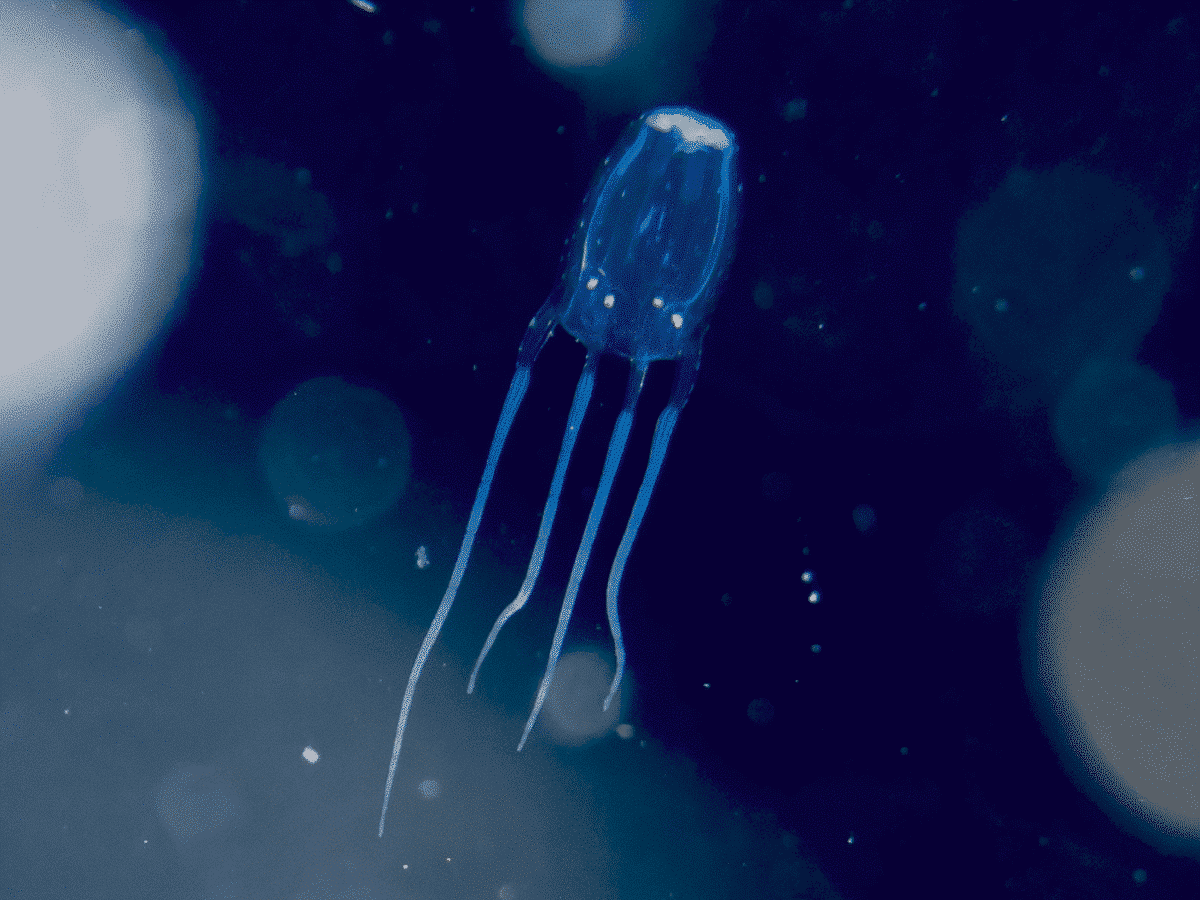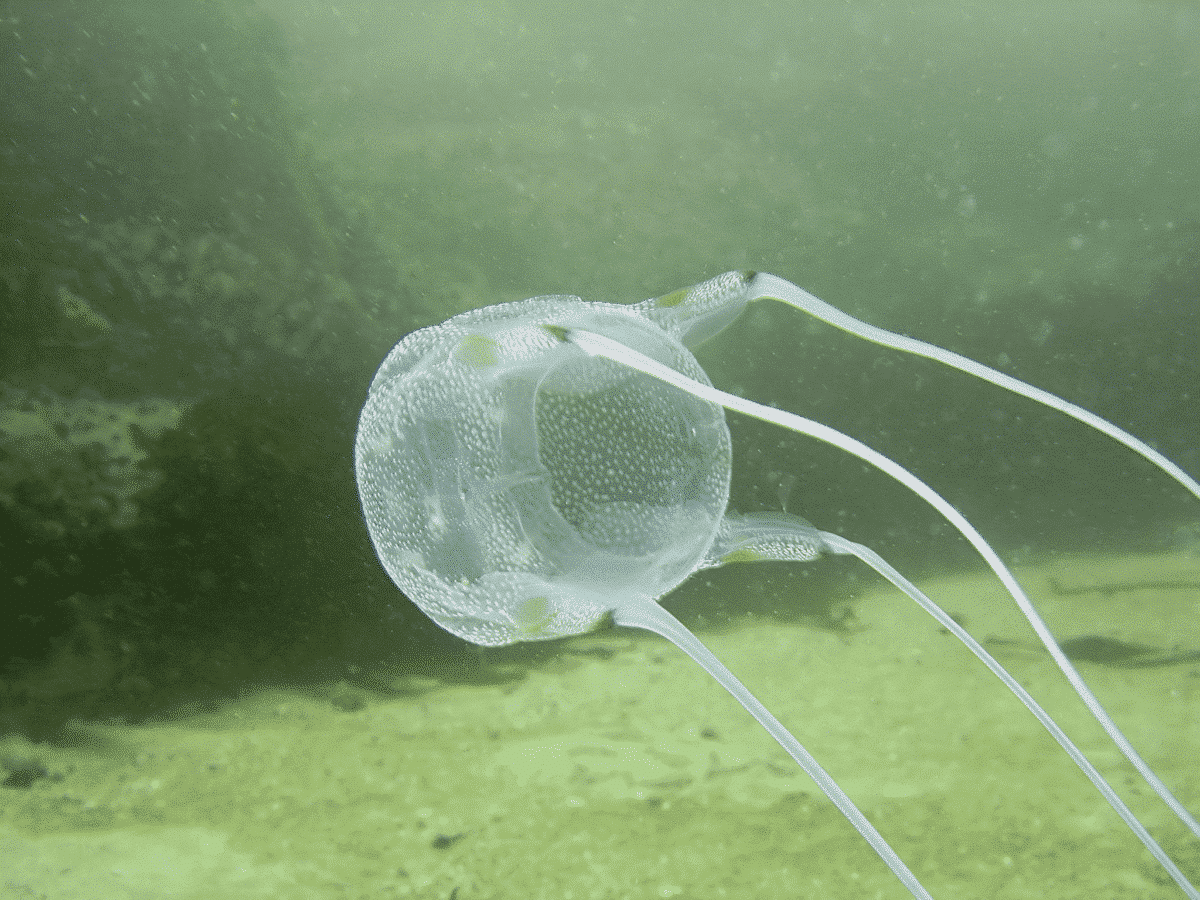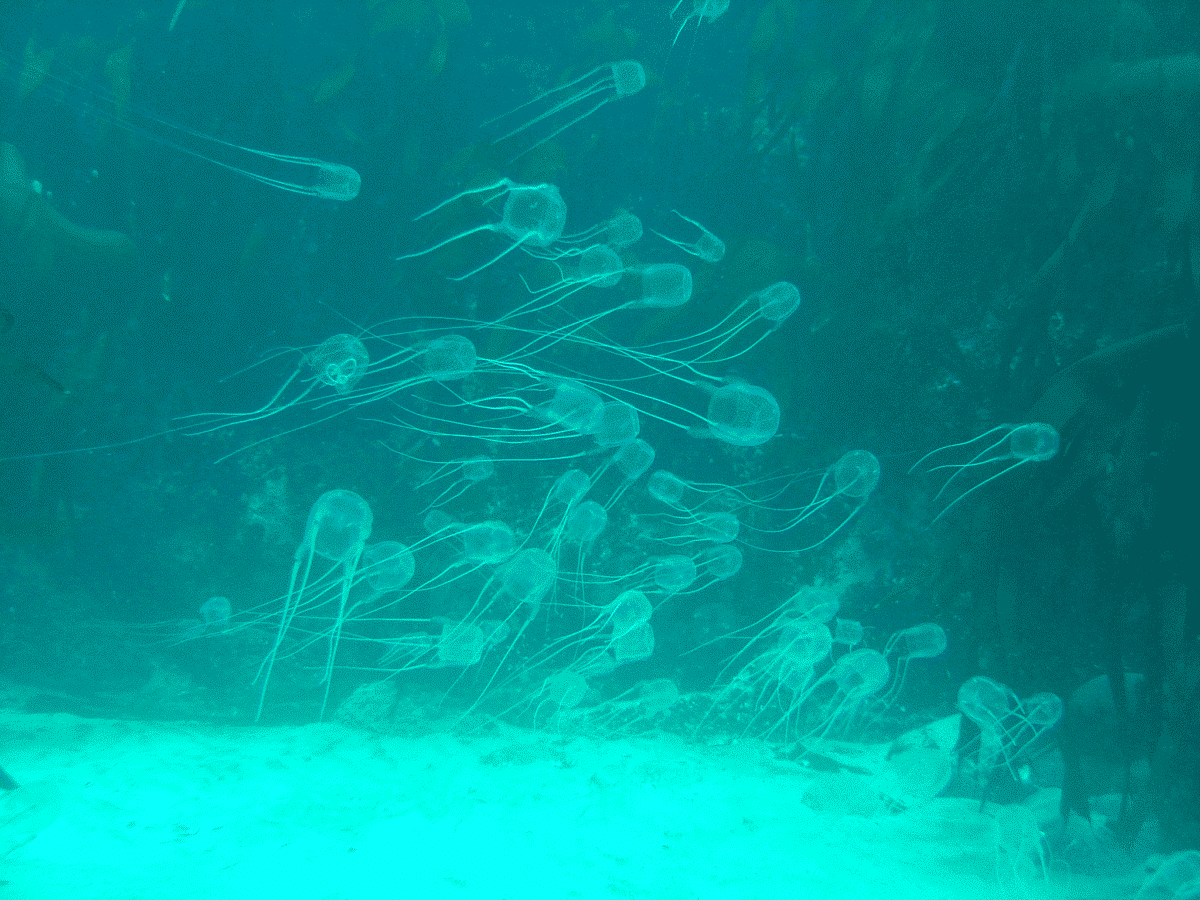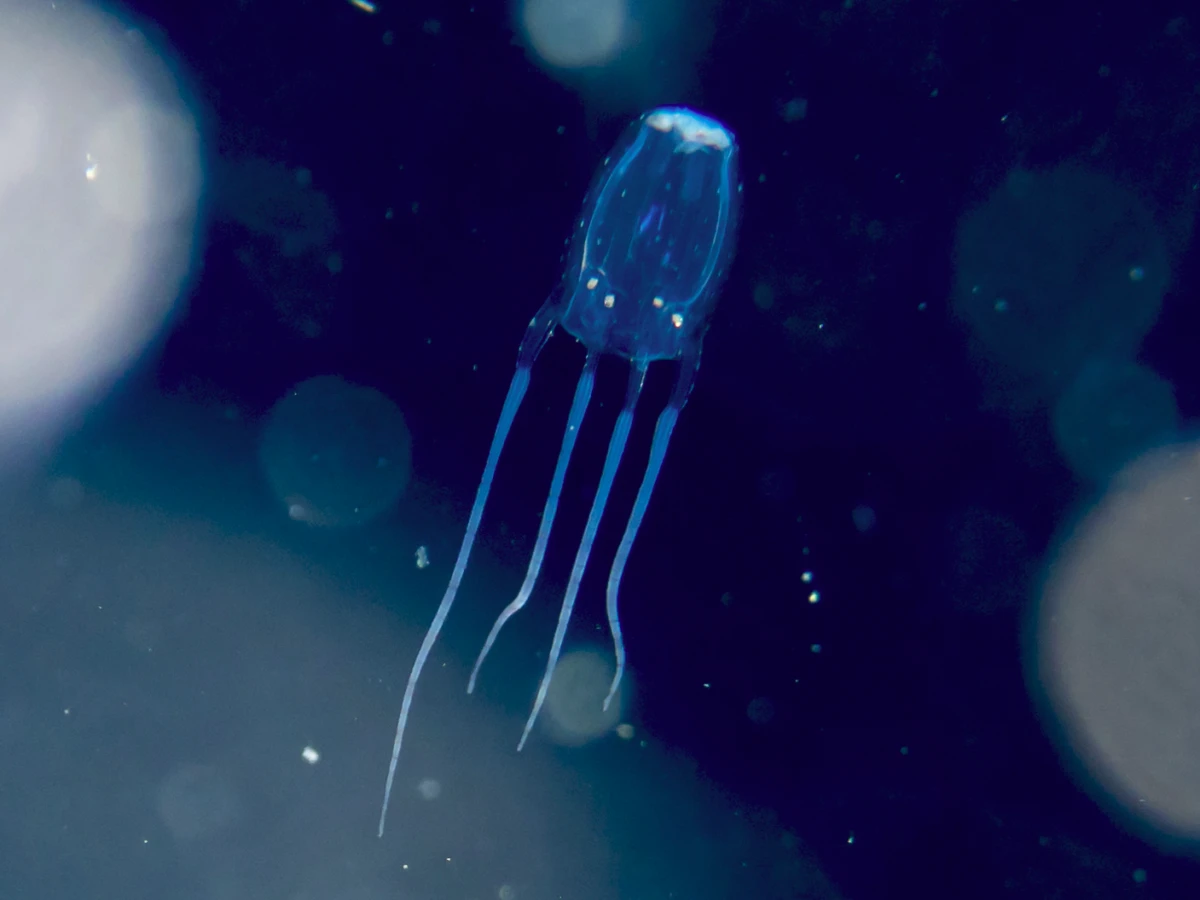Have you ever encountered the fascinating Irukandji jellyfish? Found in northern Australia and some parts of the world’s tropical waters, this tiny creature measures less than half an inch long, the tiniest species among jellyfishes. However, it packs a powerful sting that can cause serious health issues.
This guideline explores why the Irukandji is a special marine organism, highlights its unique physical features and behaviors, and reviews signs and symptoms associated with its venomous stings. If you’re intrigued by these enigmatic sea creatures, continue reading for further insights and information!

Key Points
| The Irukandji jellyfish is a tiny, evil creature found in northern Australia and the Indo-Pacific waters. Despite its small size, its sting is highly potent and can cause severe health issues, demanding immediate medical attention. |
| The Irukandji jellyfish measures less than half an inch, has a blue or transparent bell and long transparent tentacles and moves undulating. It lacks a head and feeds on small planktonic organisms. |
| These jellyfish are frequently encountered in the Indo-Pacific region’s warm waters, particularly along the coasts of Australia, Thailand, Malaysia, and Vietnam. They tend to inhabit shallow waters close to coral reefs or in estuaries. |
| To avoid dangerous encounters with Irukandji jellyfish, it is essential to wear protective clothing, swim in designated safe areas, stay alert, and seek immediate medical attention if stung. Respecting and observing these creatures from a safe distance is also crucial. |
| The Irukandji jellyfish is endangered due to a lack of knowledge and human activity. Conservation initiatives aim to raise awareness, educate people on coexistence, and enforce protection laws to preserve their habitats and ensure survival. |
Want to jump ahead? Click below
What Is An Irukandji Jellyfish – Overview Of The Species

The Irukandji Jellyfish, a small yet malevolent creature, inflicts intense pain and various symptoms upon humans. Named after an indigenous Australian group of people, the Irukandji Jellyfish is found mainly in the waters of the Indo-Pacific.
Despite its small size, the jellyfish bell is usually no larger than a fingernail, its venom is incredibly potent. It is widely regarded as one of the most malevolent beings on Earth. Most people stung by an Irukandji Jellyfish will experience severe pain, nausea, vomiting, and cramps, among other symptoms.
Although the jellyfish is rarely fatal, its sting can cause serious health complications, and medical attention should be sought immediately after a sting. With its bright blue bell and long, thin tentacles, the Irukandji Jellyfish is a fascinating creature that demands our respect and attention in the ocean.
Identifying The Irukandji Jellyfish

The Irukandji Jellyfish is a small creature measuring less than half an inch. Its transparent appearance makes it challenging to detect in the water. However, several distinguishing physical characteristics make it possible to identify this species.
Here are some notable characteristics to consider:
- Bell
The bell of the Irukandji Jellyfish is typically blue or transparent and measures between five and seven millimeters in diameter. The bell is usually dome-shaped but can also be flattened.
- Tentacles
The Irukandji Jellyfish possesses four elongated, transparent tentacles that can reach a meter in length. The tentacles are covered in thousands of tiny, stinging cells called nematocysts.
- No Head
Unlike other jellyfish, the Irukandji Jellyfish has no head or brain.
- Undulating Motion
The Irukandji Jellyfish moves through the water undulating, using its tentacles to propel itself forward.
- Seasons
It is most commonly found in northern Australia during the summer months of December to April when the water temperature is warmest.
- Diet
The Irukandji Jellyfish feeds on small planktonic organisms.
- Venom
The venom produced by the Irukandji Jellyfish is one of the most potent toxins in the world. Venom contains several proteins and toxins that can cause various human symptoms.
Where To Find An Irukandji Jellyfish – Geographic Range & Habitat

The Irukandji jellyfish, a small, evil marine creature, is found in the warm waters of the Indo-Pacific region. Its geographic range includes the coasts of Australia, Thailand, Malaysia, and Vietnam. These jellyfish prefer shallow waters and can commonly be found near coral reefs or in estuaries.
While they may look harmless, their sting can cause Irukandji syndrome, a potentially fatal condition marked by severe back and abdominal pain, vomiting, and other symptoms.
Despite the dangers associated with these jellyfish, they continue to fascinate marine enthusiasts and researchers alike. Understanding their geographic range and habitat is crucial in developing strategies to mitigate the risk of encounters and prevent potential fatalities.
Check out The Deadliest Jellyfish in the World here.
Safety Precautions – Understanding The Potent Sting And Avoiding Contact With These Fascinating Creatures
Despite its small size, the Irukandji jellyfish is one of the evilest creatures in the world. Its potent venom can cause severe health complications, making it crucial to take safety precautions while swimming or diving in northern Australia and the world’s tropical waters.
Understanding the potent sting and avoiding contact with these fascinating creatures can help individuals enjoy their water activities without risking a dangerous encounter.
Wear Protective Clothing
One of the essential safety precautions when swimming or diving in waters known for Irukandji jellyfish is to wear protective clothing. Wearing wetsuits or protective gear adds an extra layer of defense, making it challenging for jellyfish tentacles to penetrate the skin.
Swimming In Safe Areas
Stinging from the Irukandji jellyfish can occur year-round but is more common during the warmer months. It’s recommended that individuals swim in designated areas protected by stinger nets or enclosures to reduce the risk of a sting. These areas are typically monitored and considered safer for swimmers.
Stay Alert And Vigilant
Being alert while swimming or diving in the waters known for the Irukandji jellyfish is essential. If you notice any signs of jellyfish in the area, avoid swimming or diving in that location. Additionally, be aware of any warnings or notices from beach patrols or other authorities.
Seek Medical Attention
If you’re stung by an Irukandji jellyfish, seeking medical attention is essential. The sting can cause severe pain, nausea, vomiting, and cramps, among other symptoms, and may require medical intervention. Early treatment can help lessen the severity of the symptoms and prevent further complications.
Respect And Observe Jellyfish From A Distance
Finally, respect and observe these fascinating creatures from a safe distance. Avoid touching them or interfering with their habitat, as it can cause distress and may lead to an encounter. Admire them from afar and appreciate their unique physical features and behaviors.
Learn more about Jellyfish stings – symptoms and causes here.
Appreciating Their Beauty
The Irukandji jellyfish is a creature that, despite being only the size of a thumbnail, has the potential to be incredibly dangerous. Found in waters around Australia and Asia, these jellyfish have stingers that can cause intense pain, muscle cramps, and even heart failure in humans.
However, denying these jellyfish are stunning is impossible despite their deadly reputation. Their bell-shaped bodies are translucent, allowing you to see their mesmerizing patterns and internal organs, and their long, thin tentacles are covered in tiny, vibrant blue and purple spots.
The Irukandji jellyfish is so captivating that photographers and videographers have made it a popular subject of their work, allowing us to appreciate these beautiful yet deadly creatures from afar safely.
Conservation Efforts For Irukandji Jellyfish – Initiatives To Protect These Endangered Species
The Irukandji jellyfish is a unique and fascinating species with a nasty sting that can lead to fatal results. Sadly, they are endangered due to a lack of knowledge and human activity. There have been numerous conservation efforts to protect the Irukandji jellyfish.
To address this crisis, Initiatives include creating awareness about these creatures, educating people on how to coexist with them effectively, and enforcing stricter protection laws to prevent the destruction of their habitats.
By creating a well-informed community that understands the importance of these endangered species, we can ensure the protection and survival of Irukandji jellyfish for generations to come.
FAQ
The smallest known species is the Irukandji jellyfish (Carukia barnesi). It measures only about 1 centimeter in bell diameter, making it one of the tiniest species.
The Irukandji jellyfish is primarily found in the waters of the Pacific Ocean near Australia. They inhabit coastal regions and are often encountered in the Great Barrier Reef area.
While some small species, like the Irukandji jellyfish, possess venomous tentacles that can cause severe symptoms in humans, not all small species are dangerous. Many small species are harmless and do not pose a threat to humans.
The sting from small species, particularly the Irukandji jellyfish, can lead to a condition known as Irukandji syndrome. Symptoms may include severe pain, nausea, vomiting, sweating, and, in rare cases, more serious complications such as pulmonary edema and cardiac issues.
To protect yourself from stings, it’s essential to follow safety guidelines when swimming or snorkeling in areas where they are known to inhabit. Wearing protective clothing, such as a wetsuit or rash guard, can minimize the risk of contact with tentacles. Additionally, it’s advisable to adhere to any local warnings or advice regarding their presence and take necessary precautions.
Wrapping Up with the Smallest Jellyfish
Finally, the Irukandji jellyfish is a unique marine creature in northern Australia and tropical waters. It measures less than 0.5 inches long, but its tiny size belies the power of its sting, which can cause serious health issues if untreated. Evidently, its features include four tentacles with stingers on each end and a rounded bell dotted with other stinging cells.
Understanding the signs and symptoms associated with Irukandji jellyfish stings is key to effectively responding in case of an incident. In the future, it will be worth watching for more research into Irukandji jellyfishes to better chart their habitats and understand their behaviors more deeply.
If you ever swim near regions where these creatures exist, take extra precautions to protect yourself from possible contact with them. Take care in their natural habitat and stay informed about their habits. A little knowledge can help you keep safe!
Next up:
- Unveiling the Tiniest Seahorse
- Fearsome Saw-Scaled Viper Bite
- Witness The Largest Colony Of Bats Ever Discovered
Join our Forum for free today!

- Big Cats Love Mouthing Affection - July 22, 2024
- Kind Elephant Merciful To Lion Cubs - July 22, 2024
- Beachgoers Save Massive Shark Stranded In Florida - July 22, 2024


